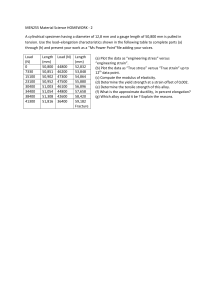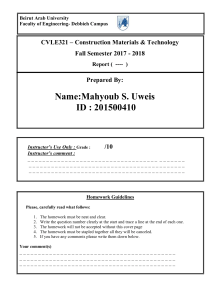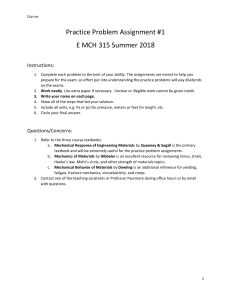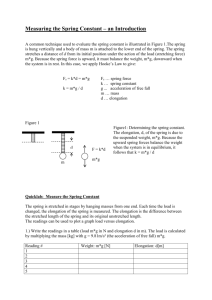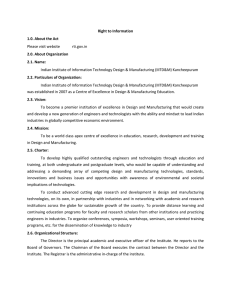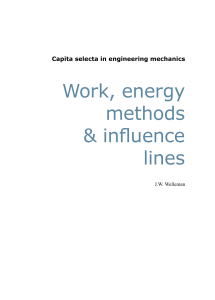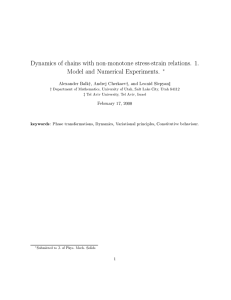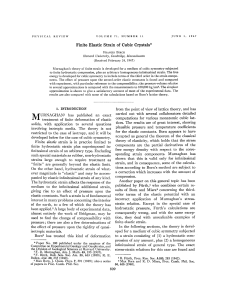Use of the Principle of Least Work and Castigliano's Second... 2a P 2b
advertisement
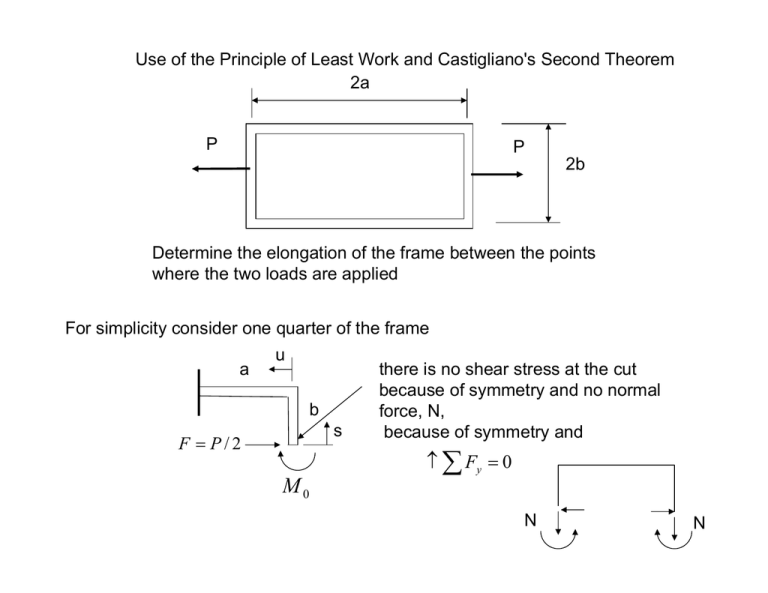
Use of the Principle of Least Work and Castigliano's Second Theorem 2a P P 2b Determine the elongation of the frame between the points where the two loads are applied For simplicity consider one quarter of the frame a u b s F = P/2 M0 there is no shear stress at the cut because of symmetry and no normal force, N, because of symmetry and ↑ ∑ Fy = 0 N N We don't know the value of the internal moment M0, so this problem is statically indeterminant. From the Principle of Least Work δU = ∂U δ M0 = 0 ∂M 0 for arbitrary δ M 0 U= Here, we keep only the strain energy due to bending M (s) = P s − M0 2 u M (u ) = s F = P/2 M0 Thus, 1 M 2 ( x ) dx ∫ 2 EI Pb − M0 2 Pb − M0 2 ∂M ( s ) ∂M ( u ) 1 1 ∂U M s ds M u du = 0 = + ( ) ( ) ∫ ∫ EI 0 ∂M 0 EI 0 ∂M 0 ∂M 0 b 1 ⎛ Ps 1 ⎛ Pb ⎞ ⎞ M 1 ds M − − + − ( ) 0⎟ 0 ⎟ ( −1) du = 0 ⎜ ⎜ ∫ ∫ EI 0 ⎝ 2 EI 0 ⎝ 2 ⎠ ⎠ b which gives a a Pba − Pb 2 + M 0b − + M 0a = 0 4 2 Thus, we obtain Pb ( 2a + b ) M0 = 4 ( a + b) Now that we have the moment we can find the displacement ∆ F u a b s F = P/2 ∆F M0 Note that But we have U = U ( F , M 0 ( F )) ∂U ∆F = ∂F M0 ∂U + ∂M 0 Thus, even though M 0 = M 0 ( F ) F ∂M 0 ∂F we can treat M0 as if it was a constant when differentiating the strain energy 1 U= 2 EI b ∫ ( Fs − M 0 ) 0 1 ∂U ∆F = = ∂F EI 2 1 ds + 2 EI b 1 Fs − M sds + ( ) 0 ∫0 EI a ∫ ( Fb − M 0 ) 2 du 0 a ∫ ( Fb − M ) bdu 0 0 ⎞ 1 ⎛ Fb3 M 0b 2 2 Fab M ab = − + − ⎜ ⎟ 0 EI ⎝ 3 2 ⎠ Placing in the expressions for F and M0 in terms of P Pb3 ( 4a + b ) ∆F = 24 EI ( a + b ) We need to double this result since this is only the elongation of one side, giving Pb3 ( 4a + b ) ∆ P = 2∆ F = 12 EI ( a + b )
